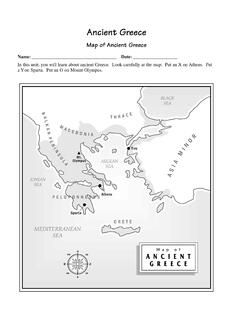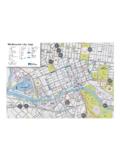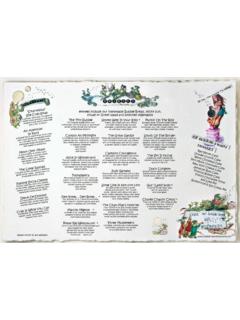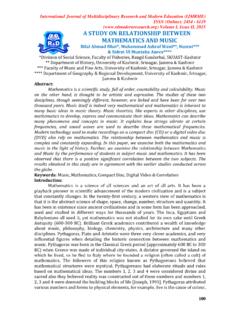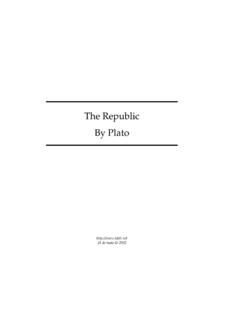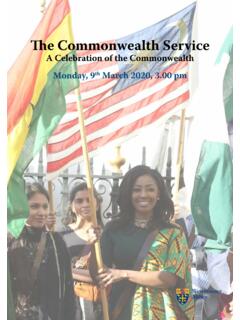Transcription of A Timeline of Church History - St. Sophia Greek Orthodox ...
1 ~ Timeline of Church History ~ New Testament Era (45 80 Gospels of Matthew, Mark & Luke are written) Seven Ecumenical Councils Crusades 1095 - 1291 1916 Pentecostal ChurchformedOne, Holy, Catholic and Apostolic Church ~ The Orthodox Church ~ 33 Pentecost 49 Council at Jerusalem95 Book of Revelation written 150 Justin Martyr describes the Divine Liturgy 325 First Ecumenical Council ~ Nicene Creed. 326 Empress Helen discovers the cross of Christ397 Synod of Carthage ratifies Biblical Canon (NT closed)451 Council of Chalcedon589 Filioque added to Nicene Creed (Error later adopted by Rome)787 Seventh Ecumenical Council (Icons approved) 880 The Photian Schism988 Conversion of Russia begins (Prince Vladimir is baptized)1054 Great Schism 1204 Sack of Constantinople 1517 Luther s Thesis (Reformation Begins)
2 1333 Gregory Palamas defends Orthodox spirituality 1529 Church of England formed 1453 Turks overrun Constantinople 1854 Dogma of Immaculate Conception 1870 Dogma of Papal Infallibility 1988 1,000 Years of Orthodox Christianity in Russia 1455 Gutenburg prints the Bible1794 Russian Missionaries arrive in Alaska and introduce Orthodox Christianity to America Roman Catholicism Protestantism 1729 Methodist Churchformed2005 Over 20,000 Christian denominations 1845 So Baptist Church formed215 - 290 Rise of Christian schools in Alexandria and Antioch 563 The Great Church , Hagia Sophia consecrated in Constantinople1833 St.
3 Seraphim of Sarov 2001 Pope apologizes to Orthodox for crusade 1589 Patriarch in Russia 397 - 460 Nestorian and Oriental Orthodox Churches Formed Note: All Christian churches can be traced back historically to the Orthodox Church founded by the Lord Jesus Christ. 70 Destruction of Jerusalem as foretold by Christ 1066 Norman conquest of Britain ( Orthodox hierarchs are replaced with those loyal to Rome) 2005 1,972 years of Orthodoxy Christianity Chronology of Church History 33 Pentecost - The Holy Spirit descends on the Apostles and gives birth to the Church .
4 33-100 known as the Apostolic age. Rapid spread of the Church throughout the Roman Empire and beyond. 45-80 Apostles Paul, Peter, James, John and Judas write their epistles. Gospels of Matthew, Mark and Luke are written. 49 Council at Jerusalem (Acts 15) establishes precedent for addressing Church disputes in Council. James presides as bishop. Gradually Sunday (called the Lord's Day) replaces the Sabbath as the day of worship. 60-180 Several Gnostic sects appear which attempt to infiltrate Christian communities. 64-67 Persecution of Christians in Rome under Emperor Nero.
5 Sts. Peter and Paul become martyrs. 69 Bishop Ignatius consecrated in Antioch in heart of New Testament era; St. Peter had been the first bishop there. Other early bishops include James, Polycarp, and Clement. 70 Destruction of Jerusalem, foretold by Jesus (Matt. Ch. 24). 95 Bo ok of Revelation written by the Apostle John on island of Patmos; later John writes his Gospel. 96-98 Persecution of Christians under Em peror Domitian. 110 St. Ignatius Bishop of Antioch, the author of several orship of the d, author of hools in Alexandria and e Roman Emperor Decius persecutes Christians.
6 , an vows to vanquish rge, tian Faith posed when the heretic on n the of Myra in Lycia. ch: Sts. ologian, e , ds his monastery in the Judean wilderness, ped. Toledo, Councils ends at Nicea; the the centuries old use of icons to the of Bulgaria is baptized. About this time ng ce Vladimir is baptized and begins conversion of the e OKALIA, a classic of arrive in ce Orthodoxy to North America. olution in Russia begins. Christians are dox aith. dox Christianity. important epistles, is ( ) martyred at Rome.
7 150 St. Justin Martyr describes the liturgical wChurch centered in the Eucharist. Liturgical worship is rooted in both the Old and New Testament. 202 St. Irenaeus, Bishop of Lyons is martyreseveral books against heresies. 215-290 The rise of Christian scAntioch. 244-49 Th 258 St. Cyprian, Bishop of Carthage, author and theologianis martyred. 300 Christianization of Britain 303 St. Alban is martyred cleti 300-305 The Emperor DioChristianity. Thousands of Christians, including St. GeoSt. Barbara, and St. Catherine are martyred.
8 313 Emperor Constantine ends persecution of Christians andgives them the right to freely exercise their faith. The Edict of Milan marks an end to the period of Roman persecution of Christianity. 325 The Council of Nicea settles the major heretical challenges to the ChrisArius asserts Christ was created by the Father. St. Athanasiusdefends the eternality of the Son of God. Nicea is the first of Seven Ecumenical ( Church -wide) Councils (325 - 787). 326 Empress Helena finds the Cross of Jesus Christ in Jerusalem. Later she builds the Church of the Resurrection the place of Christ's Resurrection, where each year oOrthodox Pascha (Easter) the Holy Fire descends.
9 330 Beginning and spread of monasticism in Egypt: St. Anthony and Pachomius. 397 Synod of Carthage ratifies Biblical Canon. 343 St. Nicholas, Bishop 330-410 Period of the great Fathers of the ChurAthanasius, Basil the Great, Gregory the TheAmbrose of Milan, John Chrysostom and others. 381 The Second Ecumenical Council in Constantinoplreaffirms the need to have five Patriarchates: RomeConstantinople, Alexandria, Antioch, and Jerusalem. 410 Alaric, leader of the Germanic Visigoths, takes Rome451 Council of Chalcedon affirms apostolic doctrine of two natures in Christ.
10 563 The Great Church , Hagia Sofia, consecrated in Constantinople. 584 St. Sabba founwhere later the Typicon for Church services is develo 589 A local synod of the Roman Catholic Church in Spain, adds filioque to the Nicene Creed. This error causes division between the Eastern and the Western Churches. 630 First the Persians, then the Arabs threaten the Byzantine Empire, persecute Christians and destroy churches. 685 The spread of monasticism on Mt. Athos begins. 726 Emperor Leo the Isaurian starts his campaign against t he veneration of icons.
